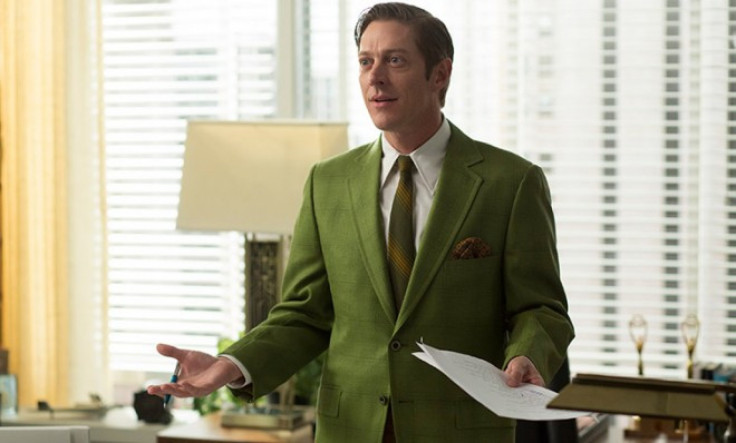'Mad Men' Meets 'Dr. Feelgood': This Is Sterling Cooper Draper Pryce On Drugs

The latest episode of “Mad Men," "The Crash," finds Sterling Cooper Draper Pryce employees tap-dancing and running around all hopped up after receiving some quote-unquote vitamin shots, which led viewers to suspect that something slightly stronger than vitamin B and a so-called "mild stimulant" was being injected into Don Draper and Co.
Indeed, “vitamin shots” in the 1960s sometimes contained a little speed along with vitamin B-12. “Mad Men” is starting to encroach on the “Breaking Bad” wheelhouse.
Amphetamines’ mood-altering powers stem from the drug’s ability to increase the amount of dopamine and serotonin -- the “feel-good” brain chemical -- in the synapses of a person’s brain. It does this through a feat of disguise; the drug has a similar structure to dopamine, so it can pass through the brain’s dopamine transporters and work its magic on the nerves. It forces dopamine out of the storage compartments in nerve cells, reverses the normal flow of dopamine to direct it to the synapses and inhibits certain enzymes that degrade dopamine, cutting the brake lines of the brain, basically.
Society’s attitude toward uppers was a bit more relaxed in previous decades. Whereas a person burning the midnight oil these days might reach for a 5-Hour Energy or a Red Bull, in the 1940s, you might reach for speed. Amphetamines like Adderal are still used today to treat narcolepsy and ADHD.
But amphetamines can mask a person’s sleepiness and cause dizziness, restlessness and irregular heartbeat and are pretty habit-forming.
Novelists Ayn Rand, Graham Greene and poet W.H. Auden were just a few of the artists that came to rely on an amphetamine called benzedrine, which was introduced in 1933 as a treatment for nasal and airway obstruction and was later produced in tablet form. Though the uppers helped Rand adhere to a punishing work schedule that helped her bang out “The Fountainhead” in record time, she became addicted to amphetamines.
From the 1930s to the 1960s, many celebrities fell under the spell of physician Max Jacobson, also known as Dr. Feelgood. Jacobson’s specialty prescription was a vitamin B-12 shot that had another special ingredient besides vitamins -- amphetamines.
The list of Jacobson’s alleged patients is a veritable who’s who of the 20th century: director Cecil B. DeMille, “Twilight Zone” scribe Rod Serling, actress Marilyn Monroe, “In Cold Blood”author Truman Capote and even President John F. Kennedy and his wife, Jackie.
The recently published expose “Dr. Feelgood” claims that Jacobson’s shots influenced JFK’s decisions at crucial points in history, like the first Kennedy-Nixon debate, before which, the authors of “Dr. Feelgood” claim, Jacobson injected methamphetamine directly into Kennedy’s voice box, and JFK’s first meeting with Soviet premier Nikita Krushchev. (While a New York Post article on the book is rather juicy, Kirkus Reviews calls it a “thin, mostly secondhand portrait” of the doctor.)
Capote reportedly described Jacobson’s shots as “instant euphoria.”
“You feel like Superman,” the author supposedly said. “You’re flying. Ideas come at the speed of light.” But the crash afterward was “like falling down a well.”
But the 1970s brought about Jacobson’s own crash. The good doctor was breaking one of the cardinal rules of drug slinging: Never sample the merchandise. He was working long hours and seeing many patients. One patient, photographer Mark Shaw, dropped dead in 1969 from amphetamine poisoning. This led to an investigation that culminated in Jacobson being stripped of his medical license in 1975.
Will Draper and company keep sampling the debilitating lows of uppers as well as the dizzying highs? Given the weak results of SCPD's marathon brainstorming session (one of the copywriters misspelled "Chevy," their star client's name), we are guessing this was a one-time thing.
© Copyright IBTimes 2024. All rights reserved.











